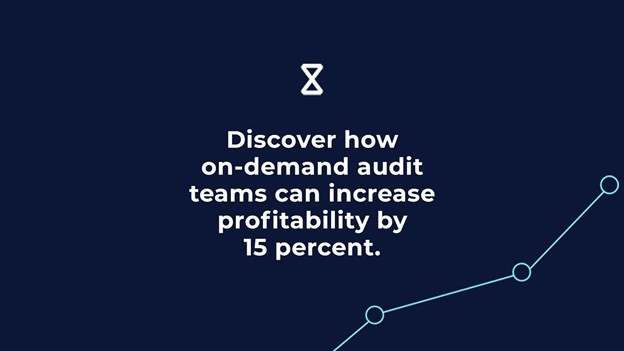There’s no denying it: COVID-19 has rewired the way we work. Almost overnight, the world adapted to off-site working conditions. Suddenly, the bedroom replaced the boardroom, and the home office became the new think tank. Now, after over a year of working from the comfort of their own homes, workers want location-flexible working environments. And companies across industries are rushing to comply. Still, it’s becoming increasingly clear that to be successful, remote work situations need a sound strategic foundation.
As states dial back COVID-19 restrictions, it’s time for companies to take a long, hard look at their working environments. What lessons have they learned from the last year and, most importantly, what will be most advantageous going forward? For example, many companies are looking into a long-term “hybrid workforce” strategy. This model gives employees the freedom to work on-site, off-site, or a combination of both.
According to the 2021 Work Trend Index: Annual Report prepared by Microsoft, 73% of workers surveyed said they want flexible remote work options going forward. The report also noted that 63% of workers want more in-person collaboration post-pandemic. At first glance, those two stats might seem to be at odds with each other. But in truth, they reveal a strong trend: employees want the best of both worlds. And they expect companies to deliver on this.
That leaves business leaders with an enormous task: shifting to a hybrid workforce as seamlessly as possible—without overlooking any details. Companies that manage to do so can look forward to an extremely valuable transformation in the years to come, especially if the new strategy aligns with the business’s principles and standards.
So, what are some of the considerations when building a hybrid working environment?
Key resources
Take a look at your company’s key resources. These can include physical resources, like your office building or your staff’s computers. But they can also include less tangible assets, including financial, intellectual, and human resources. Next, consider how shifting to a hybrid workforce will impact these resources. Once you’ve got a clearer understanding of what’s at stake, you can forge ahead on a strategy for each key area.
Boosting human resources
The first thing you’ll want to consider is an invaluable resource: the people who keep your company going. A hybrid workforce could have significant benefits for both boosting and protecting this resource.
First, remote work removes the geographical constraints that come with recruiting. In other words, companies that adopt a hybrid work model can access a much more diverse talent pool. When the whole country (or even the world) is your talent pool, you can find employees with the desired skills and expertise, no matter where they call home. Plus, this lets you tap into international innovation, skills, and leadership that might not be available otherwise.
But talented employees won’t just fall out of the sky because you decide to support remote work. This kind of change must be supported by a change in hiring strategies and focus. For starters, not all roles within your organization will be suitable for remote work. When deciding whether or not someone is a good fit for a specific position, make sure you’re considering whether they’ll need to be in the office full-time, part-time, or not at all. Internal talent should also be considered for new roles.
Finally, HR should make sure remote employees have access to the same information as on-site talent. It’s easy to overlook the value of in-office huddles around the coffee machine when it comes to information sharing. Regularly hosting Zoom team meetings, remote Happy Hours, and other informal avenues of connection can be crucial to keeping everyone on the same page.
Protecting human resources
A hybrid workforce strategy can also protect the employee retention rate. Giving employees the flexibility to choose their ideal working environment increases job satisfaction. Employees with a stressful commute can avoid the soul crush of rush hour, while employees with busy home lives can escape to the office for more focused working time. It’s a win-win.
Of course, this kind of flexibility doesn’t come without challenges. Areas such as inclusivity and productivity will need to be carefully considered. Employees that work remotely need the same level of support, training, and growth opportunities as on-site staff. And, in the same vein, those working off-site need to be as productive—and produce the same level of quality—as those on-site. You’ll want to consider how your company collaborates, shares information, conducts training, and creates opportunities for social events.
Another key consideration: how to preserve the company’s culture. What kind of purpose and core values do you want to keep at the forefront? What policies need to be put in place to uphold and enhance these for both on-site and off-site employees? These ideals and the way they are presented to employees should be continuously developed. Especially as new hires join, the correct culture needs to be portrayed to them regardless of whether they are on-site or off-site.
If you’re considering restructuring your company’s core values, this is your chance! Start by talking to your staff at every level. What do they value? How can you align your company’s values with theirs? When transitioning to a hybrid working environment, you’ll need to adjust old traditions and undertake new ones. By building a company culture that puts people first, companies can increase staff retention and motivation.
Managing human resources
New working models come with new managerial requirements. For a company to successfully transition to a hybrid workforce, management needs to be equipped with the right tools and skills to manage both remote and on-site teams. That means a broader range of leadership abilities and more bandwidth to track progress and productivity, regardless of geographic location or time zone.
Management will need to be equipped with new skills and the appropriate tools to manage a team that is working both remotely and on-site. In addition, they will need a broader range of leadership abilities to keep track of progress and productivity irrespective of geographical area or time zone.
After thousands of years of evolution, the digital revolution has thrown a monkey wrench into personal interactions. For example, how do you gauge employees’ body language without seeing them in person? How can you read someone’s mood or tone when corresponding through text-based channels, like Slack? Companies that adopt a hybrid model need to think hard about what management needs to uphold if they want to make certain issues—such as proximity bias for employees in the office—do not exist.
Management also needs to understand the nuances that come with their teams working from home. For example, interruptions from family duties and the ever-dreaded poor internet connection tend to come with the territory. Larger teams can make managing each individual’s circumstances very difficult. Ensuring equality across the board can be challenging without proper organization and thought to this process.
It’s crucial for management to lead with compassion. Today’s employees are experiencing increased stress, anxiety, and depression, and issues like digital fatigue. Leadership must be able to recognize and support those who are struggling with any mental health-related issues. On an organizational level, companies need to ensure they’re offering support to employees and that the support is accessible to anyone who needs it—whether on-site or off-site.
Finally, management needs to set realistic expectations for employees. Most likely, those expectations will be different than those specified in the past. This can be most effective when employees can work with management to establish what those expectations are. It will also work in everyone’s favor that management and employees alike do their best to make the general experience enjoyable.
Infrastructure resources
Next, determine the infrastructure needed to implement a successful hybrid workforce strategy. Again, odds are good that both the physical and technological infrastructure will change to support the new workforce.
In terms of technological advancements, it will be essential to create an effective workspace for employees working remotely. This includes providing, among other things, a secure and effective internet source, the appropriate work devices, and a secure platform to transfer sensitive information. Likely this will require continuous improvements to support seamless productivity, collaboration, and growth.
Another consideration: how to get the most out of your physical office space. With the varied number of employees coming in, you may need to reassess how to use your space. For example, a hybrid workforce can leave more room for collaboration-oriented areas and resource sharing systems such as “hot desking” or hoteling.
When done right, this can lead to significant cost savings, which means more money for other business areas. This can also supply companies with a good level of flexibility to better deal with a scenario if another variant outbreak were to occur in the near future. But perhaps even more importantly, It can start the transition from the traditional, hierarchical office to create a newer, more developed type of work environment.
The road to a hybrid workforce is one we’ll all eventually walk
Bloomberg published a research paper dated June 2021, which outlined that Manhattan’s sublease space available was 62% higher than before the pandemic and more significant than the levels seen after the great financial crisis and 9/11 terrorist attacks. It also mentions that we see a trend emerging in San Francisco, where companies including Salesforce.com Inc., Airbnb Inc., and Twitter Inc. have looked to sublease out their office space as they plan for long-term hybrid work arrangements. This shows that leaders in the industry are making the call to reduce office space and transition to a hybrid workforce.
Considering these trends, hybrid workforces aren’t optional. They’re the future. And although it has the potential to hold significant benefits for employers and employees alike, companies will need to have detailed and insightful preparation measures in place to optimize their success.







